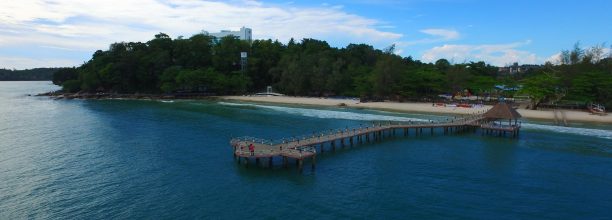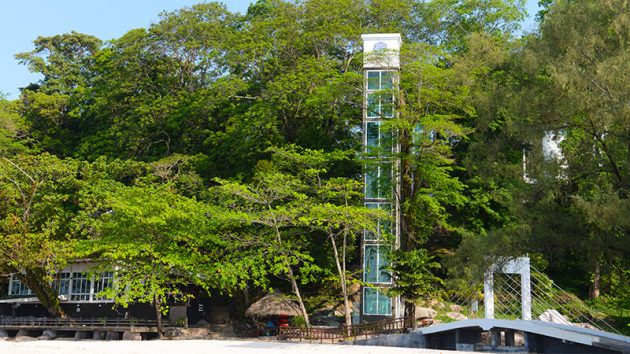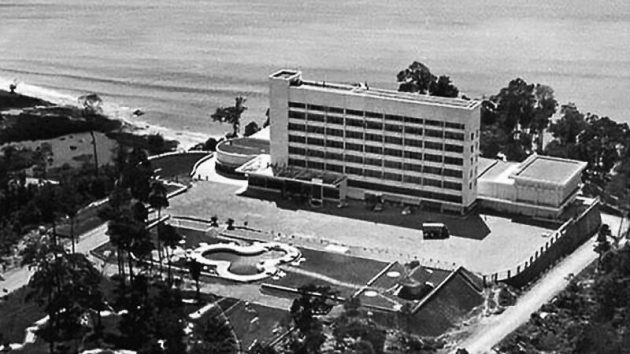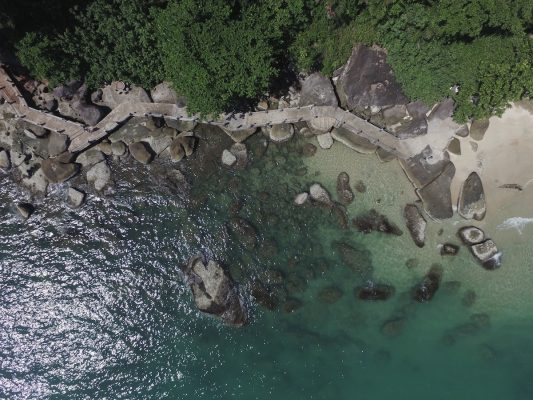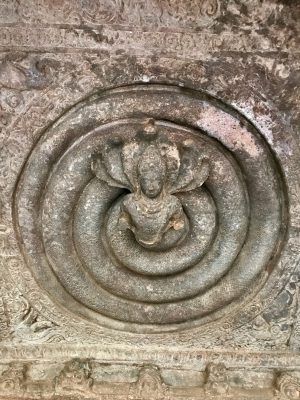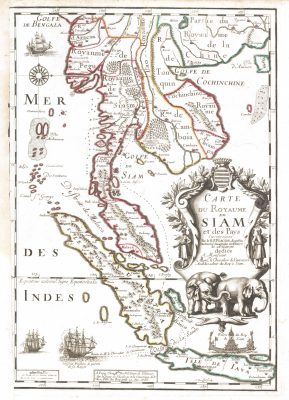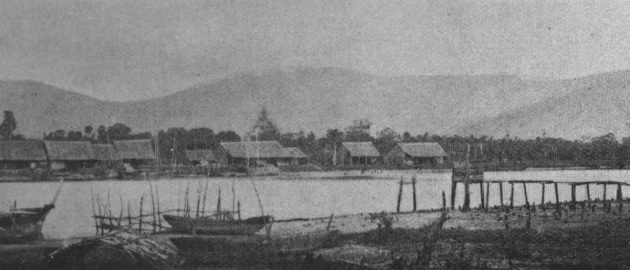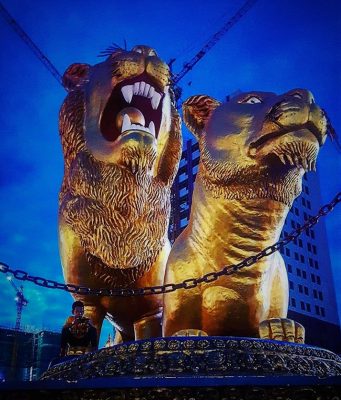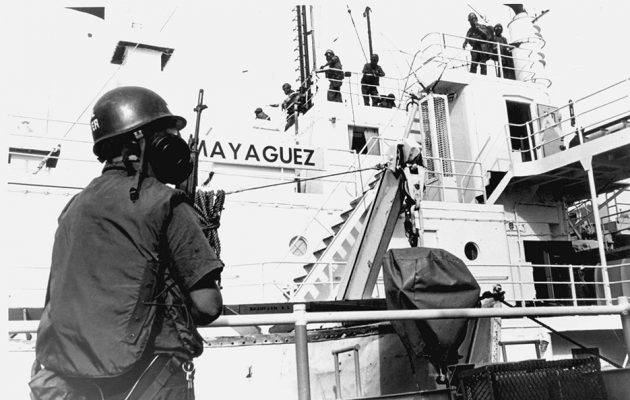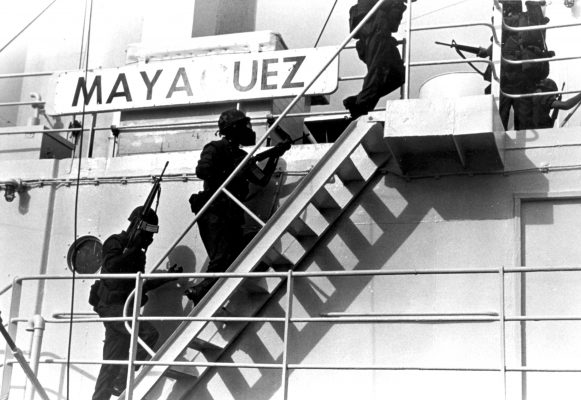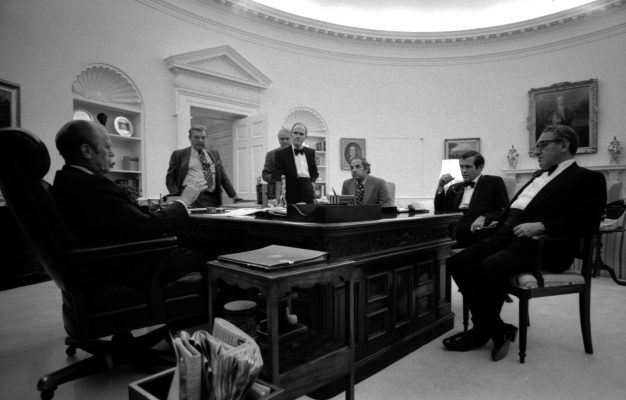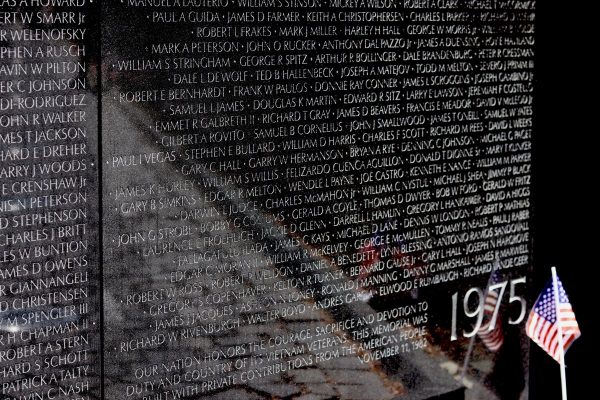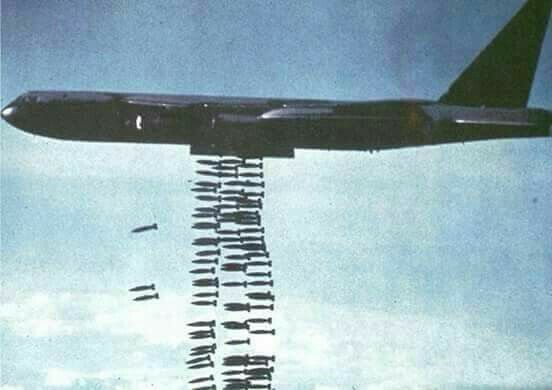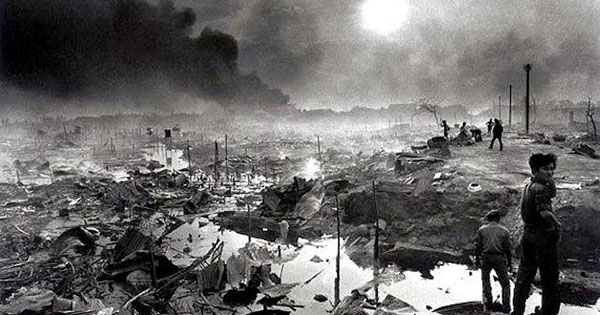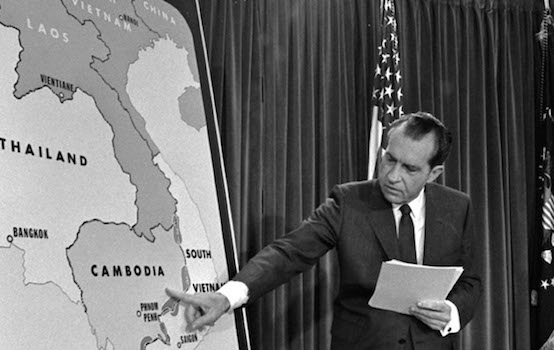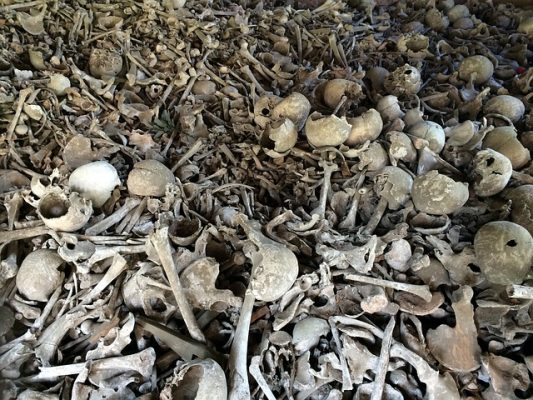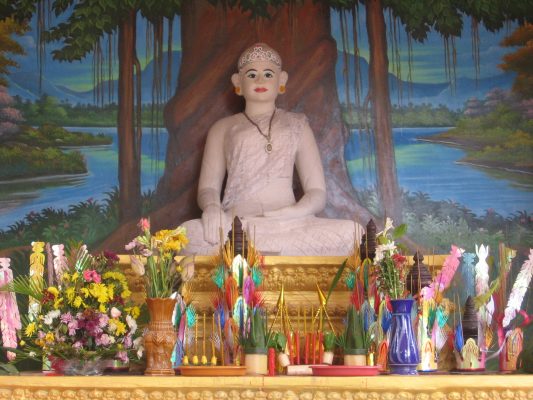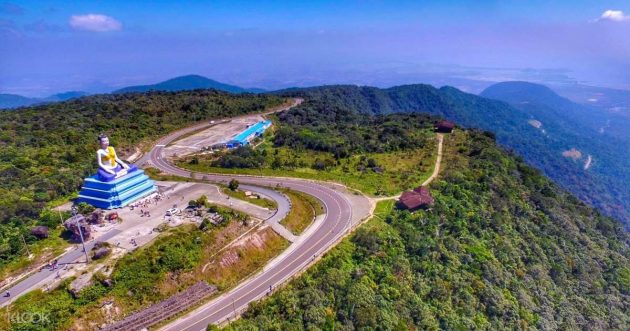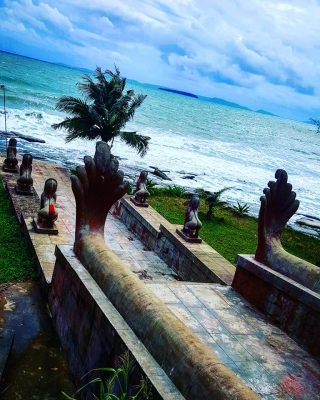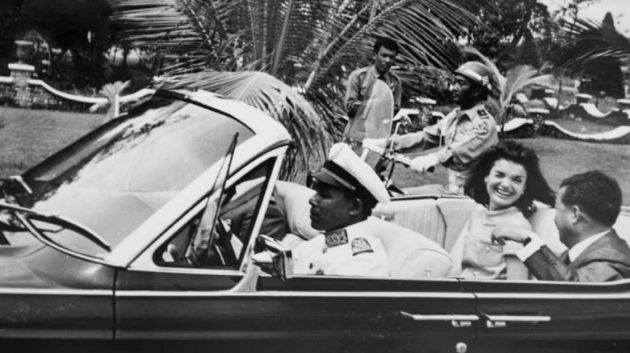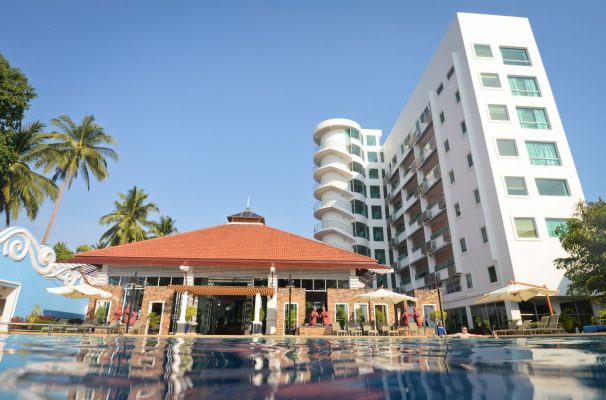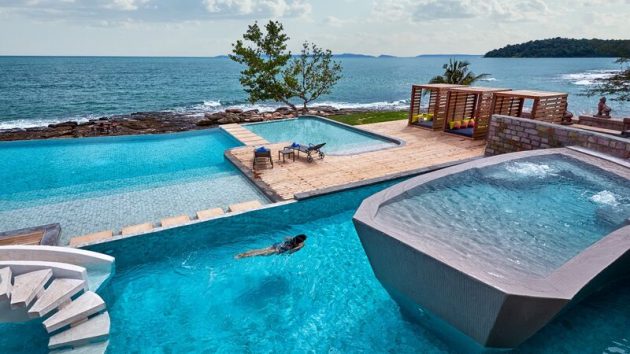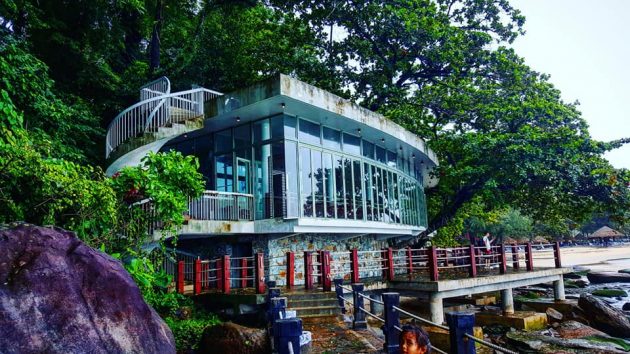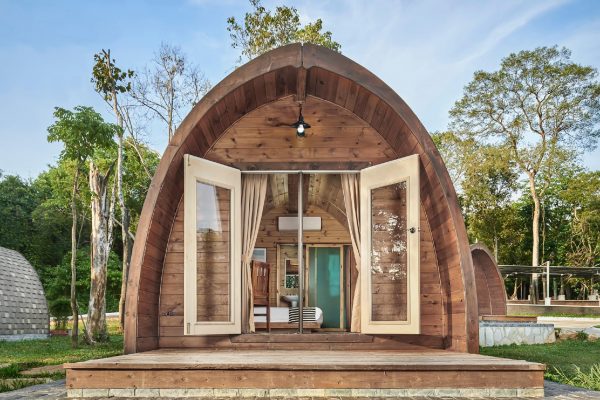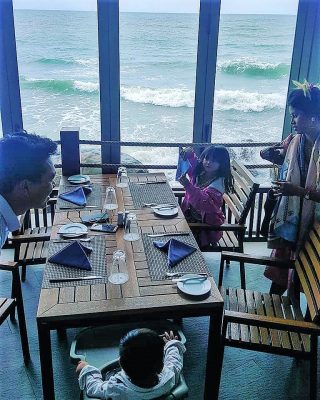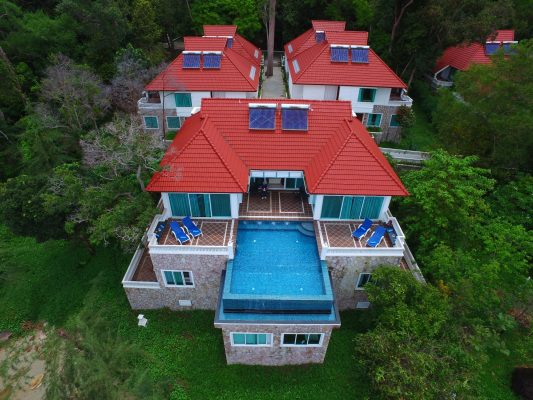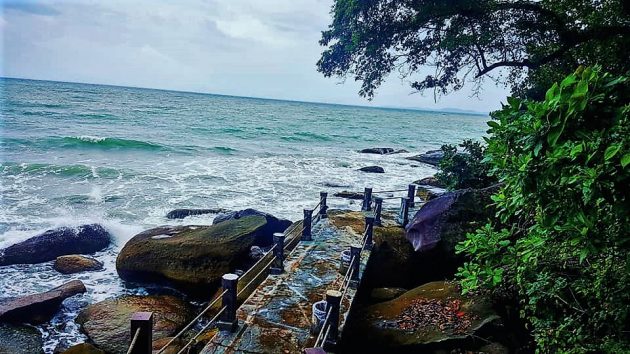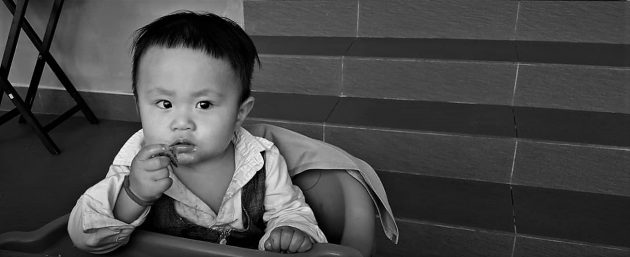From Lost World to Last Hope
‘Where the Mind is Without Fear’
Where the mind is without fear and the head is held high;
Where knowledge is free;
Where the world has not been broken up into fragments by narrow domestic walls;
Where words come out from the depth of truth;
Where tireless striving stretches its arms towards perfection:
Where the clear stream of reason has not lost its way into the dreary desert sand of dead habit;
Where the mind is lead forward by thee into ever-widening thought and action–
Into that heaven of freedom, my Father, let my country awake.
Rabindranath Tagore
Independence is a condition
After taking a long, muscle relaxing, soul cleansing spa on the balcony of my private villa, I walk along the narrow viaduct that runs across the tops of incredibly tall, old-growth-forest trees until I reach a glass elevator. With stunning views out across the ocean, I am transported down to a private beach and a visually striking restaurant made up of large stones and plate glass, that seems to perch out over the rocks and above the crashing sea. Staring out to sea over a 5 star breakfast I am aware that these are indeed, days close to heaven.
‘In a gentle way, you can shake the world.’
Mahatma Mohandas Gandhi
Porta Triumphalis
Independence, once gained was fleeting and soon lost to Cambodia, a whisper on the offshore breeze, a memory like a fading postcard, a ghost of times past –haunting, tormenting, gone.
When it was first completed in 1964, The Independence Hotel shone like a bright shiny new jewel in the jungle, lighting more than just the rocky, sparsely inhabited coastline of Cambodia; it was a source of national pride and a beacon of hope. A symbol of a country born again, newly independent from its colonial shackles; confident of a future now in its own hands. In November 1967, HRH King Norodom Sihanouk strode triumphantly through the gates and into the foyer with his special guest, the former first lady of the United States of America, Jacqueline Kennedy, it was a visit celebrated as a great diplomatic coup throughout the kingdom and put Cambodia on the cover of Time magazine.
Porta Libitinensis
But there was a massive war blowing up on the Kingdom’s doorstep, encroaching into its territory; soon the young nation was to be thrust into a world of geo-politics, opposing ideologies, cold wars, hot firefights, domino theories, guerilla warfare and carpet bombing. There was also unrest within, both at the grass-roots level and from pretenders to the throne. Then the darkness came, unimaginable evil, unspeakable horror, the Khmer Rouge; after that only shock, trauma and pain, there amongst the ruins.
Eventually, the humbled Independence Resort rose from the ashes, tentatively at first; like rebuilding a broken dream from the shards of a violently shattered mirror, hoping against all hope to get a different reflection. Until finally, it stands today as a glorious sanctuary, more than just a symbol of hope but, as an example, (to everything and everyone around it) of what could now so easily be lost forever.
A Brief History of Independence
Historically, (in the western canon at least), it is considered that there have been three major periods of the declaring of independence: from the 1770s, commencing with the Revolutionary War of America, through to the 1830s, when the last royalist bastions fell in the Spanish American wars of independence.
In the immediate aftermath of the First World War following the breakup of the Ottoman, Austro-Hungarian, Russian and German empires.
From 1945 to 1979, when seventy newly independent states emerged from the European colonial empires and the collapsed (Nazi) German Reich. The end of World War II saw the Allied West lose much of its appetite for expansionism and colonialism, with the British, French, Belgians, Dutch, Spanish and Portuguese all relinquishing their claims over countries in Asia, Africa and many other parts of the globe -in the decades immediately after the war. Granting, (usually after protracted negotiations over trade and resources) former colony states their freedom, in some cases establishing entirely new countries.
In the second Millennium, South Sudan, East Timor, Serbia, Montenegro and Kosovo have all declared themselves free and been accepted into the world as new and independent states.
An Island of Peace
After the rise and fall of the Funan and Chenla Empires, which had constantly waged war with each other and divided the territory, the Angkor Empire grew from the early 800’s (CE) to rule over most of mainland South East Asia, (including Thailand, Myanmar and Vietnam) and parts of Southern China. At its peak it was one of the largest, greatest and most sophisticated Empires of human civilization, until its eventual fall to the Siamese in the middle of the 15th century.
After the fall, what was to remain of Cambodia was often used as a sort of buffer zone between the Thais and Vietnamese. And so, seeking protection from their ever marauding neighbours, (the Siamese under Rattanakosin Rule and the Vietnamese under the Nguyen Dynasty) Cambodia agreed to an alliance with France, which resulted in it becoming the French Protectorate of Cambodia as a part of French Indochina from 1863.
In 1867, the Thai king signed a treaty with France, renouncing suzerainty over Cambodia in exchange for the control of Battambang and Siem Reap provinces, which officially became part of Thailand. The provinces were ceded back to Cambodia by a border treaty between France and Thailand just 40 years later, (1907). Cambodia continued as a protectorate of France from 1867 until 1946, when it was granted self-rule within the French Union, before gaining full independence in 1953.
Cambodia became an independent constitutional monarchy under King Norodom Sihanouk in 1953, when French Indochina disbanded and Cambodia, Vietnam and Laos were given back their independence.
This was a glorious time in the country’s history which saw its young king strive for rapid modernization for his people: erecting many public buildings, monuments and structures with bold, modern and uniquely Cambodian designs.
In order to manage the transition from French Colony to democratic Constitutional Monarchy, Norodom Sihanouk stood down from the throne in 1955, installing his father Norodom Suramarit as King.
As Prince Norodom Sihanouk he established the Sangkum Reastr Niyum, (literally, the Community of Common People) in 1955 as a movement and political organization to guide the young country through its transformation.
The philosophy and principles of the movement were for conservative social values, monarchism, nationalism and Theravada Buddhist teachings. The Sangkum functioned according to principles of ‘Buddhist socialism’, seeking progressive goals and an end to social injustice based on the conservative religious and social traditions of Cambodia.
Amidst the growing tensions and fighting in countries all around him, the young prince proudly declared his nation an ‘Island of Peace’.
However, this sense of freedom and bravely striding into the future soon met with the head on collision of clashing ideologies and modern warfare. Despite claiming neutrality, the ever encroaching Vietnam / American war threatened the stability of the newly independent nation. In 1970 the monarchy and the government were overthrown in a political coup largely accepted to have had the covert backing of the United States Government.
The United States Government quickly and officially recognized this new regime as the legitimate government of Cambodia and promptly began issuing loans that would soon added up to USD$274 million. Five years later, when the U.S. left Cambodia, (or abandoned it depending on your view) it took only five days for the country to fall to the Khmer Rouge. Today, with interest those ‘loans’ from the United States to the Lon Nol regime total over USD$500 million; an amount the current U.S. Government of today is still demanding must be repaid.
Sea Creatures
In ancient mythology, Cambodian people are said to have been born of the sea, created by a marriage amongst the gods.
In Buddhist and Hindu legend, the Naga were a mystical race who took a form similar to that of a Chinese Dragon or a king cobra, (with up to seven heads). They lived in a kingdom underneath the Pacific Ocean, thought to be somewhere near modern day Indonesia, (Java). The Naga had special powers which enabled them to take human form. The daughter of the Naga King, (Princess Soma) married another ancient ruler, (Preah Thoung) who had sailed to Southeast Asia following an arrow he saw in a dream. Once he had paid the dowry of an island called Koh Thlok, the father of the Princess drank the waters around the island to reveal it as a mountain and a vast land below, which he then gave to the newly wed couple and this became Cambodia. Thus was born the Khmer nation and from their union came the Khmer people.
Many of the oldest Khmer temples were built on mountain tops and even today mountains are revered as holy places. (Phnom means mountain or hill top in Khmer.)
The Naga represents the spirit, the land and the water of the Khmer, there is a well-known saying in Cambodia that simply states that, Khmer people are born from the Naga.
A Parlay with Pirates
In ancient times, Cambodia’s maritime trade was conducted through the waterways of the Mekong Delta, (which was then a part of ancient Cambodia) the township of Prei Nokor (Saigon) became a significant commercial center for the Khmer Empire.
The area around Sihanoukville, in the province of Kampong Som was sparsely populated, the landscape mostly made up of thick jungle, rugged coastline and mangrove swamps. Legend has it that the area was both hideout and haven to fearsome pirates. Along the river mouths and waterways were small villages of Khmers, Vietnamese, Chinese, Javanese and Malays.
At the end of the 17th century, Cambodia had lost control of the Mekong River route, as the Vietnamese expanded their power over the area of the nine dragons, (the lower Mekong). Records show that during the Nguyen – Siamese War of 1717-18 a Siamese fleet burned down what was known as the port at Kampong Som but were defeated by the Vietnamese at Ha Tien.
Through the middle period of the 1700’s, Cambodia’s coastline was being fought over and divided up between the Vietnamese and the Siamese, whilst at the same time being terrorized by Chinese pirates. The Khmer King entered into a sort of parlay with the region’s most notorious pirate, a Chinaman by the name of Mạc Tông, (Mac-Tien-Tu), whose father Mac Cuu had established a Chinese settlement at Ha Tien.
Mac Tien Tu would rule the seas from Ha Tien and control the maritime network in the eastern half of the Gulf of Thailand.
At Ha Tien, the Bassac River flows into the Gulf and this route was now vital to Cambodia’s ability to conduct direct maritime trade. In 1757, Mac Tien Tu, who was based out of Ha Tien, also acquired the ports of Kampot and Kampong Som; some records say this was as a reward for his military support to the Khmer King, although others suggest the King probably had little choice in the matter.
In 1771, King Thaksin of Thailand took control of Kampong Som, Kampot and Ha Tien and the era of the Chinese pirates was over….for now.
Alexander Hamilton, who traveled on the Gulf of Thailand in 1720, wrote that “Kampong Som and Banteay Meas (later Ha Tien) belonged to Cambodia, as Cochin-China was divided from Cambodia by a river (Bassac river) of three leagues broad.” and “King Ang Duong constructed a road from his capital of Oudong to Kampot”. Kampot remained the only international seaport of Cambodia. “The traveling time between Udong and Kampot was eight days by oxcart and four days by elephants.” French Résident Adhemard Leclère wrote: “…Until the 1840s, the Vietnamese governed Kampot and Péam [Mekong Delta], but Kampong Som belonged to Cambodia.
The Vietnamese constructed a road from Ha Tien to Svai village – on the border with Kampong-Som – via Kampot.” – source: “Kampot of the Belle Époque: From the Outlet of Cambodia to a Colonial Resort”. Center for Southeast Asian Studies, Kyoto.
The British Empire followed a distinct policy by the 1850s, seeking to consolidate its influence. Eye witness reports give rare insights, as Foreign Secretary Lord Palmerston’s agent John Crawford reports: “Cambodia was at the Keystone of our policy in these countries, – the King of that ancient Kingdom is ready to throw himself under the protection of any European nation…The Vietnamese were interfering with the trade at Kampot, and this would be the basis of an approach…”
Palmerston concluded: “The trade at Kampot – one of the few remaining ports, could never be considerable, in consequence of the main entrance to the country, the Mekong, with all its feeders flowing into the Sea through the territory of Cochin China The country, too, had been devastated by recent Siam – Vietnam wars. Thus, without the aid of Great Britain, Kampot or any other port in Cambodia, can never become a commercial Emporium.” Crawford later wrote: “The Cambodians… sought to use intervals of peace in the Siam – Vietnam wars to develop intercourse with outside nations. The trade at Kampot which they sought to foster was imperiled by pirates. Here is a point where the wedge might be inserted, that would open the interior of the Indo-Chinese Peninsula to British Commerce, as the great River of the Cambodians traverses its entire length and even affords communication into the heart of Siam”. –source: “London Company’s Envoys Plot Siam”. Siamese Heritage.
Soon after, as French Indochina: Cambodia, along with Laos and Vietnam, (which was actually broken into three states known as Tonkin, Annam and Cochin China) all became a single administrative and economic unit.
Cambodia’s coastal region -with Kampot as its capital- contained the arrondissements of Kampot, Kampong Som, Trang, and Kong-Pisey. Given the already established trading center of Saigon, pursuing another one nearby was never considered. French focus was on the Mekong and the idea of establishing an alternative route to Chinese and Thai markets along an uninterrupted waterway.
Insurrection
As Saigon flourished, Kampong Som and the river port town of Kampot began to diminish in size as well as significance. By the mid to late 1800’s there was a strong Chinese influence and population in the region and the Chinese controlled the Khmer opium trade through Kampot. When the French tried to assert control of the trade in Opium, it soon led to an insurrection that spread throughout the region, until it reached Kampong Som where an infamous Chinese pirate named Quan Khiem joined the fray. The uprising in the region lasted from 1885 until 1887.
By the end of 1886, with the French taking a terrible hammering, the King held an interview with the rebels and negotiated something of a peace settlement that began the following January. As part of this treaty, Quan Kiem kept the authority he’d already granted himself as ‘Absolute Master’ of his domain in the northern part of Kampong Som province -the ultimate authority of the king would not include his territory. When a fresh band of rival pirates threatened this region in 1890, it was to Quan Kiem the locals turned to for protection and not the French governor in Kampot, then the regional capital.
Kiem succeeded in expelling the pirates back to Siam. Six years later, now an old man in frail health, Quan Kiem would be arrested without resistance by the French Governor.
The Jaws of the Lion
The official name of the city is Krong Preah Sihanouk in honour of the former king. It can be translated as either ‘City of the holy Sihanouk’ or ‘Honorable Sihanouk City’.
King Norodom Sihanouk (reigned 1941-1955, 1993-2004) remains revered as the father of the modern nation of Cmabodia. The name Sihanouk is derived from Sanskrit through two Pali words: siha which means lion and hanu which means jaws.
In an ancient land this is a new place, it started as a port carved out of the jungle by the French in 1954, as Vietnam tightened its grip on the Mekong Delta, Cambodia needed a solution that would give it direct and unrestricted access to the open sea. Kampong Som as it was then known, was chosen for the site of a brand new, deep-sea port and so a base camp was cut into an area of unoccupied Jungle that became known as Hawaii Beach. France donated all of the funds for the construction of the port and the United States paid for the construction of a highway linking the port to the capital Phnom Penh.
In 1955, Australia donated rolling stock, described as “railway wagons of various types”, worth at the time ₤A 441,000, and “needed for new rail links.” Assistance from France, Germany, and China between 1960 and 1969 supported the construction of a rail line, which ran from Phnom Penh to Sihanoukville.
In 1960, Australia again provided four passenger carriages but soon after rail service to the area ceased because of the war. Services would resume for a time in the early 1980s however, guerrilla activities continued to be a major and often tragic disruption. By 2008, due to a lack of funds, corruption and incapable management, the trains south had ceased to run.
During construction and after its completion in late 1959, (the port was inaugurated in April 1960) population in the area began to grow as did tourism from Phnom Penh.
Prince Sihanouk engaged the services of his friend and the young nation’s most famous architect, Vann Molyvann to create an urban plan for a new seaside town, including a state residence for the Royal Family. In 1964 the City was officially named, Sihanoukville in honour of the kingdom’s Crown Prince.
The mid to late sixties was something of a golden time not only for the newly independent country but also for its new seaside town, with villas and hotels springing up and a steady trickle of wealthy, Phnom Penh Cambodians venturing to the area for vacations as well as industry springing up at around the Port.
However, Cambodia was struggling in its endeavor to remain neutral and not get dragged into the devastating conflict on its border between the Vietnamese and the Americans. The Port of Sihanouk was covertly being used by the Vietnamese to ferry arms to its southern troops and the Kingdom could do little to stop it without taking sides and armed resistance. When the United States backed, Lon Nol regime assumed government, the port was then used for the same purposes but by the opposing side.
The Mayaguez Incident
Having evacuated Cambodia only weeks before, the United States of America’s last official act of combat in the US-Vietnam war was an episode just off the coast of Sihanoukville, near the tiny island of Koh Tang. The Port of Sihanoukville was the last point of evacuation by the US Army, occurring only days after Phnom Penh had fallen to the Khmer Rouge, on April 17, 1975.
Two weeks after the fall of Saigon, on the afternoon of the 12th of May 1975, a commercial US container ship the SS Mayaguez sailed off the coast off Cambodia on its way to the Thai port of Sattahip.
The Khmer Rouge believed the ship had sailed into their territorial waters, (something the US disputed) and quickly sent swift boats to seize the ship. The captain, with 39 crew on board, endured machine gun fire but elected to surrender his ship once a rocket powered grenade was fired across its bow.
The Mayaguez was carrying 107 containers of routine cargo, 77 containers of government and military cargo, and 90 empty containers. The Khmer Rouge never inspected the containers and the exact contents have never been disclosed. However, the Mayaguez had loaded containers from the U.S. Embassy in Saigon nine days before the fall of Saigon. Captain Miller had in his possession a U.S. government letter only to be opened in certain circumstances of extreme emergency, he elected to destroy the unopened letter before it could be discovered by the Cambodians.
The Ship was escorted to a small island nearby named Koh Poluo Wai; before surrendering Captain Charles T. Miller managed to get off an SOS which had been picked up by a nearby Australian Vessel. Via the US Embassy in Jakarta, Indonesia, United States President, Gerald Ford was informed in Washington DC of these events early the following morning.
On the 13th of May, US Naval Forces had located the ship with Orion helicopters and the Khmer Rouge commander quickly order it set sail for the Cambodian mainland. Intercepted by US Aircraft, who fired into the sea around the vessel, the ship put anchor off the coast of the nearby island of Koh Tang.
Whilst the crew were evacuated on fishing boats to the island, the United States Military began preparations to retake the Mayaguez using all necessary force.
By the following day the crew of the Mayaguez had been transferred by fishing boat to another island closer still to the mainland, named Koh Rong Sanloem, now a popular tourist destination littered with resorts and back packer accommodation.
On the evening of the 14th on Koh Rong Sanloem, Captain Miller was summoned to meet the senior Khmer Rouge Commander on the island, who requested that he return to the ship and contact the Americans to request that they cease aircraft fire on his vessels which were surrounding the Ship, the Khmer Rouge commander pointed out that he had already lost three boats and numerous men. Captain Miller informed him that this was possible but it would mean restarting the engines of the ship. This was agreed but, as it was now nightfall it was decided to conduct this operation the following day.
The following day: at 06:13am, May the 15th the USS Harold E. Holt, with a combat ready contingent of Marines on board, pulled up alongside the SS Mayaguez and prepared to mount one of the few hostile ship-to-ship boarding raids by the United States Navy since the end of the American Civil War in 1826.
Having bombarded the ship with tear gas, masked marines –after an hour long search- declared the vessel to be completely empty of personnel. What the Americans did not know at this time, was that after the fall of Saigon to the North Vietnamese on April 30th, the Khmer Rouge had sent heavy munitions and armed personnel to their islands off the cost of Cambodia to protect Cambodian Territory. Just a two weeks earlier on May the 1st the Khmer Rouge had invaded the island of Phu Cuoc in order to reclaim it under Cambodian sovereignty, but the invasion was repelled within days.
Koh Tang was being defended by over 100 Khmer Rouge soldiers. On the East Beach, two heavy machine guns had been dug in at each end and fortified firing positions had been built every 20 meters behind a sand berm connected by a shallow zig-zag trench.
Two M60 machine guns, B-40 rocket-propelled grenades and two DK-82 mortar/grenade launchers were also in firing positions. On the West Beach a heavy machine gun, an M60, plus B-40 rocket-propelled grenades and a 75 mm recoilless rifle were dug into connected firing positions. North of each beach was a 60 mm mortar and south of the beaches was an 81 mm mortar that could fire onto either beach. Ammunition was stored in bunkers behind each beach, with a third ammunition dump located near the central command post, in jungle south of the beaches. In short, the Khmer Rouge were ready to defend their island, they just didn’t know the attack would come from the Americans instead of the Vietnamese.
American Defense Intelligence, in large part from current reconnaissance flights, assessed that between 150 and 200 Khmer Rouge, backed by heavy weapons occupied Koh Tang. This report was conveyed to U-Tapao air base in Thailand, but was never briefed to the planners of the attack, who believed about 20 Cambodian irregulars armed with small-arms were on the island, it has been suggested that this was due to security clearance issues.
When the rescue plan was finalized it was to involve some 225 Marines who were to be ferried back and forth on the island by 8 helicopters, (five CH-53 Knives and three HH-53 Jolly Greens).
These were to be supported by 3 other Helicopters, whilst the USS Wilson would assist the operation with artillery fire. The USS Holt, after taking the Mayaguez, would position itself between the island and the mainland to prevent any interference in the operation from the Cambodian mainland.
United States President, Gerald Ford also approved strategic bombing in and around the Port of Kampong Som, (Sihanoukville) to demonstrate U.S. resolve in the matter. Naval planes from the USS aircraft carrier Coral Sea bombed Sihanoukville’s oil refinery, the air-base and the naval-base at Ream.
At 6:07am on May 15th, just minutes before the American attack on Koh Tang commenced, the Khmer Rouge Information and Propaganda Minister, Hu Nim made a radio broadcast announcing that Mayaguez and her crew would be released. This transmission was intercepted by the CIA station in Bangkok, translated and delivered to the White House by 07:15, (Cambodian Time). However, the White House was skeptical and immediately released a press statement stating that U.S. military operations would continue until the crew of Mayaguez were safely released.By then the attack on Koh Tang was already underway.
At 06:30am on Koh Rong Sanloem, the crew of Mayaguez were informed that they would be allowed to return to their ship once they had all signed a statement that they had not been mistreated by their captors.
Within the hour they were loaded aboard a Thai fishing boat, Sinvari (which had been captured by the Khmer Rouge five months earlier). Once in open water, an escort boat picked up the Khmer Rouge guards from Sinvari and instructed the crew of the Mayaguez to return to their ship and call off the American planes.
An orbiting P-3 Orion spotted Sinvari and the USS Wilson was ordered to intercept, thinking she might be a Khmer Rouge gunboat. The P-3 then identified that Caucasians were aboard and at 09:49 Mayaguez’s crew were brought aboard the Wilson.
Confirmation of the release of the crew was sent to the White House and at 11:27, President Ford went on U.S. national television announcing the recovery of Mayaguez and the rescue of her crew, but did not mention that they had in fact been released by the Khmer Rouge.
The mission to attack Koh Tang got off to a disastrous start for the Americans when 23 soldiers lost their lives in a helicopter crash on route from Nakhon Phanom, Royal Thai Airbase to the departure point, (U Tapao airbase). As soon as the beach landing began on Koh Tang, three helicopters were immediately destroyed whilst another 4 were damaged too severely to continue operations. This meant that of the eleven helicopters involved in the mission only three remained in service.
President Ford, (at his Secretary of State, Henry Kissinger’s urging) declined to cancel the scheduled airstrikes on the Cambodian mainland until the Marines on Koh Tang had been withdrawn. At 09:05 aircraft fighters aboard the USS Coral Sea began the airstrikes, bombing the railway, landing barges and oil storage facilities at Kampong Som; cargo planes and T-28 Trojan aircraft at Ream airfield and boats at Ream naval base.
At 11:55 the U.S. Joint Chiefs of Staff ordered U.S. forces to “immediately cease all offensive operations against the Khmer Republic and to disengage and withdraw all forces from operating areas as soon as possible”.
It is estimated that the Khmer Rouge suffered between 15 to 25 killed on Koh Tang, whilst an unknown number died on sunken swift boats and in the bombings on the Cambodian Mainland.
In rescuing the 40 hostages of the SS Mayaguez the United States Military lost 41 lives during the operation, including three soldiers who were inadvertently left behind, to be later captured and killed by the Khmer Rouge.
The Vietnam War Memorial in Washington DC lists American war dead chronologically, which is why the names of the Marines who perished in the ‘Mayagüez Incident’ appear at the very bottom of the very last panel.
Mort Rouge
The Cambodian communist movement began during the country’s struggle against French colonization in the 1940s, initially amongst Cambodian students from wealthy families studying in French universities. They were also influenced by the Vietnamese and inspired to action by the first Indochina War in the 1950s, the movement would grow rapidly and spread out over the country throughout the next two decades.
In March 1970, Marshal Lon Nol, who had previously served as prime minister, staged a successful coup to depose Prince Sihanouk as head of state. This new government immediately gained the backing of the United States. The Khmer Rouge had already established itself as a formidable opponent in the ongoing civil war, now saw a surge in membership and a groundswell of grassroots support.
Aided by the Vietnamese, the Khmer Rouge began to defeat Lon Nol’s forces on the battlefields. However, by the end of 1972, the Vietnamese withdrew from Cambodia, leaving Pol Pot’s regime to command its own war.
From January to August 1973, the Khmer Republic government, with assistance from the US, dropped millions of tons of bombs on Cambodia, which is estimated to have killed at least 300,000 people.
By early 1973, about 85 percent of Cambodian territory was already in the hands of the Khmer Rouge, the Lon Nol army was unable to go on the offensive. However, with US assistance, it was able to continue fighting the Khmer Rouge for two more years.
5
On April 12, 1975, the United States of America officially ended its support of Lon Nol’s Cambodia, 30 helicopters took off from a football field near its embassy carrying a total of 276 people, (159 of those were Cambodians who had worked for the Americans). The BBC covered the event thus: ‘In Washington, President Ford explained the reasons why the US had pulled out of Cambodia. Mr Ford said he had taken the decision with “a heavy heart” but had done so to ensure the safety of Americans who had “served valiantly”. The American withdrawal is an inglorious end to 5 years of involvement in Cambodia’s civil war. Its presence in the country was closely linked to the war it is conducting in neighbouring Vietnam. Between 1970 and 1973 the US bombed Cambodia in order to stop its North Vietnamese enemies using the country as a base. If Phnom Penh does fall, Cambodia will become the first country since Cuba 16 years ago to pass into Communist hands.’ The Government in Cambodia would last just 5 more days.
‘Twenty-five years after the end of the war in Indochina, Bill Clinton became the first US president since Richard Nixon to visit Vietnam. As a humanitarian gesture, Clinton released extensive Air Force data on all American bombings of Indochina between 1964 and 1975.
This gesture was meant as a gift, intended to assist in the search for un-exploded ordnance left during the extensive carpet bombing of the region, which remained a serious humanitarian concern.
The incomplete database revealed that from October 4, 1965, to August 15, 1973, the United States dropped far more ordnance on Cambodia than was previously believed: 2,756,941 tons’ worth, dropped in 230,516 sorties on 113,716 sites. Just over 10 percent of this bombing was indiscriminate, with 3,580 of the sites listed as having “unknown” targets and another 8,238 sites having no target listed at all. The database also shows that the bombing began four years earlier than is widely believed -not under Richard Nixon, but under President Lyndon Johnson. This is the equivelant of a plane full of bombs being dropped on the Cambodian countryside every 18 minutes, 24 hours a day, 7 days a week for 8 years in a row. Taylor Owen a Trudeau Scholar at the University of Oxford, a former visiting fellow in the Yale Genocide Studies Program and Ben Kiernan, professor of history and director of the Genocide Studies Program at Yale provided a useful comparison in “Bombs over Cambodia”: “To put the revised total of 2,756,941 tonnes into perspective, the Allies dropped just over two million tonnes of bombs during all of World War II, including the bombs that struck Hiroshima and Nagasaki: 15,000 and 20,000 tons, respectively. Cambodia may well be the most heavily bombed country in history.”
For many of the villagers in rural Cambodia they had never seen an airplane before and the many of the bombs were dropped from such a high altitude that the planes could not be seen. Here in a land of shamanism, animism and strong beliefs in powerful magic, it was as if hell itself was falling in on them from the sky.
The impact of this bombing, the subject of much debate for the past three decades, is now clearer than ever. Civilian casualties in Cambodia drove an enraged populace into the arms of an insurgency that had enjoyed relatively little support until the bombing began, setting in motion the expansion of the Vietnam War deeper into Cambodia, a coup d’état in 1970, the rapid rise of the Khmer Rouge, and ultimately the Cambodian genocide. The data demonstrates that the way a country chooses to exit a conflict can have disastrous consequences’, (Taylor Owen & Ben Kiernan, Asia Pacific Journal, 2007.)
Phnom Penh, which had a pre-war population of around 600,000, was overwhelmed by refugees (who continued to flood in from the steadily collapsing defense perimeter), growing to a size of around two million. These helpless and desperate civilians had no jobs and little in the way of food, shelter, or medical care. Their condition (and the government’s) only worsened when Khmer Rouge forces gradually gained control of the banks of the Mekong. From the riverbanks, their mines and gunfire steadily reduced the river convoys through which 90 percent of the Republic’s supplies moved, bringing relief supplies of food, fuel, and ammunition to the slowly starving city from South Vietnam. After the river was effectively blocked in early February, the U.S. began an airlift of supplies into Pochentong Airport. This became increasingly risky, however, due to communist rocket and artillery fire, which constantly rained down on the airfield and city. The Khmer Rouge cut off overland supplies to the city for more than a year before it fell on 17 April 1975. Reports from journalists stated that the Khmer Rouge shelling “tortured the capital almost continuously,” inflicting “random death and mutilation” on millions of trapped civilians. John Barron and Anthony Paul (1977), Murder of a Gentle Land.
On April 17, 1975, just five days after the American’s pulled out, Phnom Penh fell to the Khmer Rouge. This brutal regime, under the leadership of Pol Pot emptied the cities and forced everyone to work in the fields, murdered anyone thought to have come from a privileged or educated background and continued its reign of genocide for four years.
On Christmas Day 1978, having finally had enough of the murderous Khmer Rouge raids along its southern borders, the Vietnamese Army invaded Cambodia, it was all over in just two weeks, The Khmer Rouge were pushed back to the jungles of Cambodia’s borders with Thailand and Laos. On January 8 1979, the pro-Vietnamese People’s Republic of Kampuchea was established in Phnom Penh, marking the beginning of a ten-year Vietnamese occupation.
But, by then the Khmer Rouge had forcibly relocated most of the country, split up a vast majority of its families and murdered an estimated 2 to 3 million of its own people (and the real number may be even higher and will never be known).
In 1989, after ten years of occupation, the Vietnamese withdrew from Cambodia, having installed a friendly government, firstly under Chan Si and after his death in 1984, Hun Sen (from 1985). The Vietnamese wanted to be sure the government they had put in place had the experience and ability to govern in its own rite; as well as the military might to put down any threat from several resistance movements still at large and effectively ruling small villages and provinces out in the countryside, including remnants of the Khmer Rouge.
In December 1987, Hun Sen met with Sihanouk at Fère-en-Tardenois in France to discuss the future of Cambodia. Further talks occurred in January 1988. Finally, in July of that year in Jakarta Indonesia, representatives of the various warring political factions met for informal peace discussions.
At the Second Jakarta Meeting, on 19 February 1989, Australian Foreign Minister Gareth Evans forwarded the Cambodian Peace Plan to bring about a ceasefire, a peacekeeping force and the establishment of a national unity government to maintain Kampuchea’s sovereignty until elections were held.
On 23 October 1991, the Cambodian factions of the Supreme National Council, along with Vietnam and 15 member nations of the International Peace Conference on Cambodia, signed the Paris Peace Agreement.
For the Cambodian people, two decades of continuous warfare and 13 years of civil war seemed to be over, although an atmosphere of uneasiness amongst the leaders of the Cambodian factions remained.
Having returned to his country in 1991, in 1993, His Excellency Norodom Sihanouk was restored as King of Cambodia and a new government was established after the United Nations Transitional Authority in Cambodia sponsored elections.
Grandmother Mao
In Kampong Speu province, where National Road 4 winds its way across the large, forest covered hill known as Phnom Pich Nil, there is a rather unobtrusive row of small and larger spirit houses perched on the side of the road and it is here that virtually every passerby will stop. At this place, which roughly marks the halfway point between the capital and the coastal town of Sihanoukville, people get out of their cars to stretch their legs, have a toilet break, grab a roadside snack and pray for safe passage to a fearsome and powerful ghost. Phnom Pich Nil is the site where all travelers must stop and pay their respects, lest they incur the wrath of, Grandmother Mao, (Lok Yeay Mao).
It is well known that Yeay Mao can be a cruel and vengeful spirit, who will attack anyone that does not pay her her due respects. In older times, before the road came through, wanderers would still pay homage here in the hope of protection from wild animals such as elephants, snakes and tigers or against bandits and outlaws.
There are many legends about Yeay Mao, both as a living woman and as a spirit ghost, some good, some absolutely evil, so much so that Khmer people are careful to not even speak ill of her when traveling through this region -lest she hear you and then you will surely incur her wrath. It was said that she was a beautiful young woman who married a great warrior prince, a naval commander named Kry.
Kry killed by the Thais and Mao, (who thought her husband only missing) took control of his army, regrouping at Pich Nil, then trekking through the Damrei, (elephant) mountains to confront her husband’s enemies, summoning up powerful Khmer magic to defeat the Thais and pushing them back deep in their own territory.
Another, more sinister legend has it that she was taught powerful magic and warrior skills by a hermit at Pich Nil, who told her that she would be the greatest of all warriors until a man defeated her and from then on she would have no luck with men and matters of the heart. After falling in love with a prince and feigning a loss to him in an exhibition match the prince eventually abandoned her, then another lover did the same and then she lost her two sons to wild tigers.
This drove Lok Yeay Mao totally insane and she went on a murderous rampage killing many. It is said that from then on she also sliced off the penis of any unfaithful males in the entire kingdom. As part of this legend -the severing of penises- it has been claimed that it was not only to punish the men but also because the abandoned and insane Lok Yeay Mao had insatiable and unfulfilled needs of her own! Which is why at her monument, you will see not only offerings of incense, lotus, fruits, you will also see wooden or gold coloured penises everywhere!
When the new hotel and casino development was built on the site of the old French hill-station on Mount Bokor, the new owners constructed a massive 29-meter statue of Yeay Mao looking out to the ocean and on the beach at Kep there is also a small statue of Yeay Mao, (sometimes known here as Sela) who also looks endlessly out to sea, still hoping that one day her fallen lover, after all this time, will finally return to her.
Yeay Mao is considered a powerful spirit in Khmer lore, a protector of travelers, forest dwellers and those at sea and as any traveler will tell you, the drive from Phnom Penh to Sihanoukville is long, precarious and at times, mildly terrifying. For all my time here I have always stopped to pay my respects to Yeay Mao and ask for safe passage; after everything she has been through, it’s the very least I can offer, (I am also happy to report that as of the time of writing, I still remain attached to my penis.)
Saṃsāra
The seven-storey Independence Hotel sits on the rocky point between Victory and Independence Beaches, it was Sihanoukville’s tallest building and the region’s most prestigious accommodation throughout the 1960’s. The port had just been completed and Sihanoukville was quickly becoming a popular beach destination, attracting a growing stream of weekend traffic from Phnom Penh.
The Hotel was constructed during 1963 and 64 at a cost of 30,000,000 Riel, it was not inaugurated until November 13, 1968. The hotel was designed by French architect M. Mondet of Leroy & Mondet, who were also responsible for several contemporary structures in Cambodia during the 1950s & 60s. The hotel was originally seven stories high, with all 45 rooms or suites situated on one side only, so that they all faced the ocean. As the hotel’s popularity grew an additional 50 bungalows were eventually added to the grounds.
The interior decoration of some parts of the hotel were done by HRH Norodom Sihanouk himself, as was the design of the Promenade des Anglais. Color schemes of ochres, oranges, red and black, mint green and chartreuse adding to the liveliness and holiday spirit of the place.
The Independence Hotel was abandoned when the Khmer Rouge seized power in 1975. The Khmer Rouge utilized the building as a headquarters and prison as well as a site for torture and executions. After the fall of the Khmer Rouge in 1979 the hotel was taken over by squatters who occasionally opened some rooms to paying guests.
Chhne Samot Hotel Pram-Pul Jawn
During the 1980s the locals started referring to it as ‘Hotel Pram-Pul Jawn,’ which means ‘7-storey hotel,’ and the name stuck. Even today many locals know it only by that name. Following the hotel, the nearby Independence Beach has also become known as ‘Chhne Samot Hotel Pram-Pul Jawn,’, (7-Storey Hotel Beach).
The hotel opened again very briefly during UNTAC’s (United Nations Transitional Authority in Cambodia) stay in the early 1990’s in order to accommodate the influx of foreign visitors, UN contingents from Australia, Belgium and France where based in the area. They all left in 1993 and the hotel was once again abandoned.
The national road from Phnom Penh to Sihanoukville had been repaired with US Aid however, all this remained extremely dangerous for foreigners to travel on, as was the newly re-opened railway after several gruesome incidents of tourists being kidnapped and murdered. It was not until the end of 1996 that the road would be considered safe to travel along.
‘It always seems impossible until it’s done.’
Nelson Mandela
In 2004, a USD$35 million redevelopment of the hotel was undertaken by a group of Cambodian investors that would become the Dara (Khmer for Star) Group of Hotels, the shiny new Independence Hotel finally re-opened to the public in 2007.
The Sihanoukville Municipality was elevated to a regular province on 22 December 2008, after King Norodom Sihamoni signed a royal decree converting the municipalities of Kep, Pailin, and Sihanoukville into provinces. On 26 May 2011, the Preah Sihanouk bay area joined the Paris-based club, Les Plus Belles Baies Du Monde, (‘the most beautiful bays in the world’). The organisation officially accepted the Bay of Cambodia as one of its members at its 7th General Assembly.
In 2017 the Independence Hotel opened its stunning new infinity pool with a bar and poolside menu, right on the private beach area of the resort. The newly renovated and magnificent Sunshine Terrace restaurant also reopened. Today, after a new phase of beautification for the “Grande Dame” of Cambodia’s coastal hospitality, the current generation Cambodian’s are able to consider with pride and affection this majestic symbol of Cambodia’s Golden Age.
The hotel sits 5 kilometers from town on a breathtaking 22 acres of old growth rainforest and tropical gardens. It is both tranquil and dramatic in its natural beauty and serenity with old growth forests and private beach. Wild monkeys roam the grounds; the villas have private spas on their balconies and there is a stunning promenade between the breaking waves and rocky outcrop of the point.
In the original seven story structure there are 45 rooms and 5 suites, (including the top floor, Jacqueline Kennedy suite) and in the grounds there are the villas and a new and impressive area of ‘glamping’ pods for that five-star camping experience.
Elysian Fields
A few short weeks ago I visited the Hotel for the first time in several years, over the past five year or so I have probably only been down to Sihanoukville twice and then only to jump on a boat to one of the islands.
With my wife and two children in tow, I am so very glad that I made the trip, for I desperately needed a break, even a brief one and to find this sanctuary was just a pure and incandescent joy. The staff were magnificent, especially with the children, (aged 1 and 4) and I soon found the stress, grime and weight of a busy city and a hectic professional life falling away and sliding out on the tide; I had found my paradise and soon, only wonderful, relaxed kind of calm remained.
Breakfast in the Sunset, Ocean Terrace restaurant -with waves crashing into the rocks right beneath you- is a stunning way to start any day and dinner here is quiet, peaceful and romantic. The food was of a very high standard and it satisfied both the western and eastern tastes of my family, we loved it.
Our villa was large and spacious, with a big balcony containing a private spa, the actual bathroom was huge, as was the walk in closet. There was plenty of room for a family of 4. The vast infinity pool area with its poolside snacks and panoramic views of the ocean was a favourite hangout of our stay, super relaxing it was very hard to drag the kids away whenever it was time to leave.
There is plenty of uncrowded, (virtually empty whilst we were there) private-beach for taking in some sunshine and seawater and the promenade around to our villa was an exciting and much needed walk.
Just once during our stay did we venture off the reservation and into town, only to return early and declare that we wouldn’t be doing that again. The city was snarling but it was no longer the old, golden lions, now it was an entirely new and more threatening beast.
When it was time to leave we were sad to go but knew we would return, we had found our place, our sanctuary. The whole time I was there I kept thinking to myself, ‘I needed this’ but now my thoughts turn to a more altruistic observation.
Cambodia and Khmers need this and it must be protected and preserved at all costs, the coastline here, the old growth forest, the river mouth, three flora and fauna and of course the charming, friendly and legendary Khmer hospitality and the connection one finds here.
An Archimedean Point
As of this year 2019, there are 200 direct flights per week to Sihanoukville, from China alone. Construction of hotels, casinos and apartments has been going on at such a pace that the city is completely unrecognizable from its golden era, apart from a few remnant landmarks. Price increases have made the city virtually unaffordable to most Cambodians and infrastructure such as roads, drainage, sewerage and water management have crumbled under the burden of increased traffic, construction, increased activity and commerce from a wholly imported population explosion. Much of the city is struggling to function let alone cope and much that drew tourists to the area and its beautiful coastline no longer exists. Sihanoukville, much loved by Cambodians, is in middle of a tumultuous storm of upheaval, destruction, reconstruction and change; swollen and bursting at both its core and its seams. The proud lion of Cambodia’s coastline is perilously close to losing its identity, maybe it already has.
Perhaps, after all the rampant construction and the constant, bumper-to-bumper traffic jams of semi-trailers and dump-trucks has ceased and the rabid thirst for casinos has subsided, there will be time for rebuilding the roads and drains; a time for reflection and for repairing the cracks in society and the despair in the community but, we are a little way off that yet.
With the pressure, encroachment and devastation of National Parks and lands along our coastline and with the comprehensive upheaval of Sihanoukville; it becomes both urgent and important that we do whatever we can to preserve the old growth forests and green spaces that remain -for ourselves and for future generations of Cambodians.
The Independence Hotel is a special place for its geography, topography and history, it is also increasingly important site for its unspoiled environment an ecology. A jewel in Cambodia’s coastal crown. This is a heritage site, not merely a reminder of how things used to be, it is perhaps more poignantly a vision of how things should be and can be if we are mindful and take care of it.
Independence found, cannot be lost again.
‘Freedom’
Freedom from fear is the freedom
I claim for you my motherland!
Freedom from the burden of the ages, bending your head,
breaking your back, blinding your eyes to the beckoning
call of the future;
Freedom from the shackles of slumber wherewith
you fasten yourself in night’s stillness,
mistrusting the star that speaks of truth’s adventurous paths;
freedom from the anarchy of destiny
whole sails are weakly yielded to the blind uncertain winds,
and the helm to a hand ever rigid and cold as death.
Freedom from the insult of dwelling in a puppet’s world,
where movements are started through brainless wires,
repeated through mindless habits,
where figures wait with patience and obedience for the
master of show,
to be stirred into a mimicry of life.
Rabindranath Tagore

